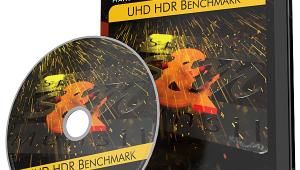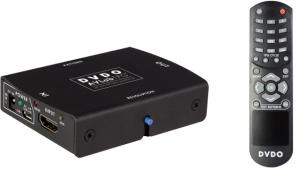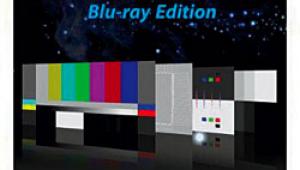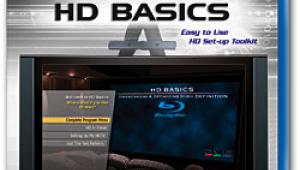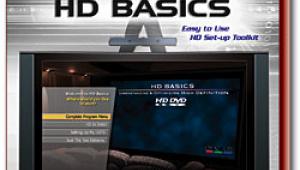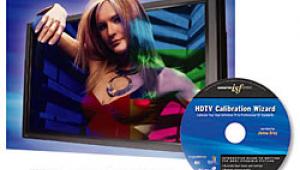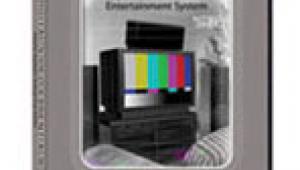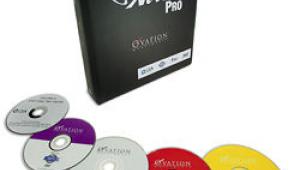TacT TCS mkII pre-pro/theater correction system
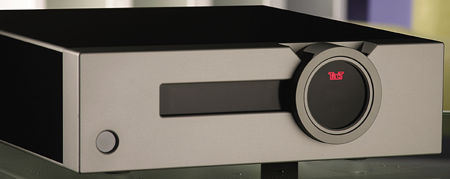
If you're a regular UAV reader, you know that small, domestic spaces do all sorts of nasty things to a system's sound. They're often either too dead or too lively. Room modes that are irrelevant outdoors or in large concert halls can turn bass into mush. How you position the speakers or listeners can reduce some of these problems, but practical limitations—the domestic requirements of multiuse living spaces, the need for coherence between sound and image in a home theater setup, the desire to avoid divorce court—can work against us. The standup-comic who first complained of a "tough room" was probably an audiophile.
Room equalization is often proposed as a solution, but it's no panacea. Equalization acts in the frequency domain; it can't solve some time-related problems, such as the reverberation time of a room that's too dead or too lively.
The whole subject of equalization is more controversial than you might imagine. Few would argue that reducing the effects of room modes in the bass is a bad thing, but once you get above 300Hz, even knowledgeable people disagree on the need for it. Used intelligently within limits, though, equalization can correct frequency-response aberrations caused by the room, the speakers, or both. The correction will never be perfect for all seats in the listening area at the same time, and the improvement might be subtle if the speakers are well designed, the room is free of gross aberrations, and the system is carefully set up. If, however, one or more of these conditions is out of whack, as is often the case, the benefits of intelligently applied correction can be significant.
TacTical Details
The simple lines of the TCS mkII ($9990) conceal the fact that it's easily TacT Audio's most complex product. A preamp-processor capable of ten channels (!) of playback, it offers the most sophisticated—and complex—multichannel speaker/room correction system on the market. Linked to a computer loaded with TacT's Theater Correction software and a (provided) calibrated microphone, it's a powerful tool that can tame some of the most problem-plagued systems.
With its nine digital and seven 2-channel analog inputs, the TCS mkII is well equipped for use in the most complicated home theater system. However, with its emphasis on room correction, it lacks some of the features you'll find in many other pre-pros, including multi-zone outputs, dedicated tape loops, video switching, and multichannel analog inputs. For the latter, you'll have to use TacT's optional ADC6 (not provided for this review), which can convert any multichannel analog input into a digital signal that the TCS can accept through an IEEE1394 link. (This link does not follow the full 1394 protocol, and so it is not presently compatible with the 1394 outputs available on a few SACD/DVD-Audio players. TacT has yet to find a 1394 receiver chip that it considers acceptable, particularly with respect to jitter.)
Like many pre-pros that use a completely digital topology, the TCS converts all analog signals to digital at the input. A/D conversions are performed by the AK5394A chip from AKM; D/A processing is done by the WM8740EDS from Wolfson Microelectronics. Digital inputs at 44.1kHz and 48kHz are also upconverted to 24/96 for internal processing. Such extra conversion steps (including the A/D and D/A conversions required for those hi-rez sources that pass through the ADC6) don't usually sit well with analog purists, who are suspicious of any digitization of their analog sources. Such objections, though, seem beside the point when applied to a product whose central reason for being is the designer's dedication to DSP room correction.
The TCS provides ten individual channel outputs in both analog and digital form. These include the six primary channels for a conventional 5.1 home theater surround setup (left, right, center, left surround, right surround, sub), plus four additional outputs for such applications as two additional subwoofers, and left and right rear surrounds for Dolby Digital EX and DTS ES. DSP correction is available for all ten channels. There are complete sets of unbalanced analog and digital outputs, plus balanced analog outputs for the front left, center, and right channels.
The TCS's digital outputs can be used to feed outboard D/A converters of your own choosing, even if only for the front left and right channels. However, I could find no compelling reason to do so—the Wolfson DACs used in the TCS are of excellent quality. The intended application of the digital outputs is to feed TacT's own digital amplifiers. These amps have been well received by other reviewers, but Ultimate AV did not request them for this review. I used the analog outputs in a conventional multichannel amp for all my listening. The review system was set up in a standard 5.1-channel configuration.
The front panel of the TCS is almost devoid of controls. There's a Standby/On switch, a large main level control with solid flywheel action, and a resolution of 0.1dB per step. (The individual channel-level controls provide the same fine adjustment.) That's it. So don't lose that remote; it controls nearly all of the pre-pro's functions! While the remote isn't illuminated, it has only 23 buttons and is relatively easy to navigate in the dark by feel alone. If I could change anything about it, I'd make it a little larger to accommodate bigger buttons.
Since there are no video circuits in the TCS, there are no onscreen menus. Apart from the computer-controlled room-correction functions, both setup and routine operations are performed from a front-panel window that displays one of 24 different screens. This window is quite small, so many of the control functions are designated by such cryptic abbreviations as OUTFS, APOL, and ADLY. These are intimidating at first, but the reasonably tech-savvy user should soon get used to them. In case you're wondering, OUTFS is for the output sampling frequency of the digital outputs—user-selectable up to 192kHz. APOL is for absolute polarity; the TCS allows you to adjust the output polarity of the entire system and each individual channel. ADLY is for absolute delay; the TCS provides delays from 0.00 to 42.65ms in 0.01ms steps for lip-synch correction.

Thirty system-configuration presets are available, twenty-two of them user-programmable, eight preset. The preset selections include, among others, all main channels small and all low frequencies sent to a subwoofer; left and right channels large (full range), no sub, and center and surrounds small, their bass and the LFE sent to the left and right speakers; and 2-channel stereo with no sub and large (full-range) left and right speakers. While these presets employ appropriate high- and low-pass filters, when room correction is employed, the preferred procedure is to build the appropriate filters into the target curves for each channel. More on this later.
Applied TacTics
TacT likes to refer to their flagship feature as Theater Correction, but, by any conventional definition, what we're talking about is equalization with additional time-domain corrections. I'll use both terms, as appropriate. It's here that things get both interesting and increasingly complicated.
I set up the TCS in my main home theater room with the system driving the B&W 703 surround speaker system I reviewed in the October 2004 UAV. Or rather, I should say that the TCS setup was performed by TacT's Dr. Radomir Bozovic, who's designed all of TacT's correction products, including the TCS.
Basically, the setup involves linking the TCS with a computer on which the TCS's room-correction software has been installed. A calibrated microphone (furnished) is placed in the listening position and, on command, the system engages and automatically measures each channel's response. The user then establishes a target curve for each channel as the correction goal. Many pre-established target curves are provided. You can modify any of them, though, to suit your own requirements. When using the Theater Correction feature, TacT recommends that you establish the high- and low-pass filters for each channel by designing the target curves to provide the desired rolloffs. That is, the equalization itself produces the appropriate crossovers. However, you'll still have to set up the bass redirection manually if your desired setup is not one of the presets provided by the TCS.
No single equalization curve will be ideal for every listening seat—in fact, optimizing for one location can, in some rooms, make the response worse elsewhere. The TCS provides the option to create nine different correction curves, all of them directly accessible from the remote. When our sample was set up, I specified three different target curves at each of three different listening seats. Ultimately, I determined that the target curve with a very gentle rolloff at the top end and a rise in the bass (more on this later) produced the best audible result with the B&W 703 surround speaker system I used for the review. (Equalization was not used in my review of the 703 system in the October 2004 UAV.)
TacTical Mov(i)es
My listening was conducted over several months using both movies (viewed from a seat left of center) and music (from the center "sweet spot," with the projector moved out of the way). I did all of my music listening from CD, using only the left and right speakers and subwoofer. (Multichannel DVD-Audio and SACD were off the table, since I did not have the ADC6.) The TCS's only surround music modes are Dolby Pro Logic II and DTS Neo:6. Pro Logic IIx is not currently offered. A direct digital feed from the DVD/CD player to the TCS was used at all times.
